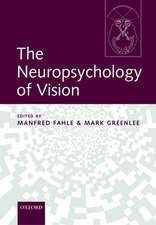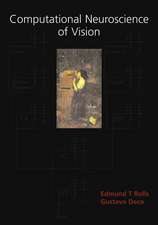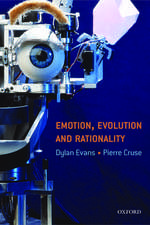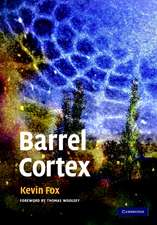The Neurobiologic Mechanisms in Manipulative Therapy
Editat de I.M. Korren Limba Engleză Paperback – feb 2014
Preț: 732.92 lei
Preț vechi: 771.50 lei
-5% Nou
Puncte Express: 1099
Preț estimativ în valută:
140.26€ • 152.30$ • 117.82£
140.26€ • 152.30$ • 117.82£
Carte tipărită la comandă
Livrare economică 22 aprilie-06 mai
Preluare comenzi: 021 569.72.76
Specificații
ISBN-13: 9781468489040
ISBN-10: 1468489046
Pagini: 492
Ilustrații: XXI, 466 p. 92 illus.
Dimensiuni: 178 x 254 x 26 mm
Greutate: 0.84 kg
Ediția:Softcover reprint of the original 1st ed. 1978
Editura: Springer Us
Colecția Springer
Locul publicării:New York, NY, United States
ISBN-10: 1468489046
Pagini: 492
Ilustrații: XXI, 466 p. 92 illus.
Dimensiuni: 178 x 254 x 26 mm
Greutate: 0.84 kg
Ediția:Softcover reprint of the original 1st ed. 1978
Editura: Springer Us
Colecția Springer
Locul publicării:New York, NY, United States
Public țintă
ResearchCuprins
Clinical Observations and Emerging Questions.- The Contribution of Clinical Observation to Neurobiological Mechanisms in Manipulative Therapy.- Muscles, Central Nervous Motor Regulation, and Back Problems.- Manipulative Therapy in Relation to Total Health Care.- The Clinical Basis for Discussion of Mechanisms of Manipulative Therapy.- Discussion of Clinical Observations and Emerging Questions.- Impulse-Based Mechanisms.- Somatic Sources of Afferent Input as Factors in Aberrant Autonomic, Sensory, and Motor Function.- Discussion.- Traumatized Nerves, Roots, and Ganglia: Musculoskeletal Factors and Neuropathological Consequences.- Discussion of Excitation and Conduction in Traumatized Nerves.- Somatoautonomic Reflexology — Normal and Abnormal.- Autonomic System Reactions Caused by Excitation of Somatic Afferents: Study of Cutaneo-Intestinal Reflex.- Sustained Sympathicotonia as a Factor in Disease.- Discussion of Impulse-Based Mechanisms.- Nonimpulse-Based Mechanisms.- Axonal Transport: The Mechanisms and Their Susceptibility to Derangement; Anterograde Transport.- Transfer of Information from Effector Organs to Innervating Neurons by Retrograde Axonal Transport of Macromolecules.- Discussion and Short Reports on Axonal Transport.- Impairment of Intraneural Microcirculation, Blood-Nerve Barrier, and Axonal Transport in Experimental Nerve Ischemia and Compression.- Discussion.- Calcium and the Mechanism of Axoplasmic Transport.- Discussion.- Trophic Changes in Afflictions of the Motor Unit.- Wing Flapping and Other Moving Topics: A Developmental Perspective.- Discussion of the Trophic Functions of Nerves and Their Mechanisms in Relation to Manipulative Therapy.- Concluding Discussion.- Clinical Observations and Emerging Questions.- Impulse-Based Mechanisms.-Nonimpulse-Based Mechanisms.- Chairman’s Concluding Statement.















